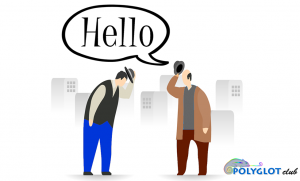Difference between revisions of "Language/Bolinao/Vocabulary/How-to-Say-Hello-and-Greetings"
< Language | Bolinao | Vocabulary
Jump to navigation
Jump to search
| Line 18: | Line 18: | ||
{| class="wikitable sortable" | {| class="wikitable sortable" | ||
!'''English''' | !'''English''' | ||
! | !Ilocano | ||
|- | |- | ||
|general greeting | |general greeting | ||
|Kumusta | |Kumusta Ka? | ||
|- | |- | ||
|Kamusta | |Kamusta | ||
| | |Kamusta | ||
|- | |- | ||
|hello/hi "Greetings" | |hello/hi "Greetings" | ||
| | |Anya Ngay? | ||
|- | |- | ||
| general greeting | | general greeting | ||
| | |Kumusta | ||
|- | |- | ||
|morning greeting | |morning greeting | ||
| | |Naimbag nga Bigat | ||
|- | |- | ||
|afternoon greeting | |afternoon greeting | ||
| | |Naimbag nga Malim | ||
|- | |- | ||
| evening greeting | | evening greeting | ||
| | |Naimbag nga Rabii, Panag Iiyot en | ||
|- | |- | ||
|how are you? | |how are you? | ||
| | |Kmusta ka? | ||
|- | |- | ||
|how are you? | |how are you? | ||
| | |Kamusta ka ngayen? | ||
|- | |- | ||
| Line 62: | Line 62: | ||
|greeting used when arriving at a house | |greeting used when arriving at a house | ||
| | |Naimbag yatang | ||
|- | |- | ||
|reply to Dada' | |reply to Dada' | ||
| | |Agiyot ta man Tatang | ||
|- | |- | ||
|reply to Dada' | |reply to Dada' | ||
| | |Sigen a tatang | ||
|- | |- | ||
|greeting to a person arriving, "where are you coming from?" | |greeting to a person arriving, "where are you coming from?" | ||
| | |Papanam | ||
|- | |- | ||
| greeting to a person going somewhere, "where are you going?" | | greeting to a person going somewhere, "where are you going?" | ||
|Adti keen mo? | |Adti keen mo?anjak ammo | ||
|- | |- | ||
| greeting to a person going somewhere, "where are you going?" | | greeting to a person going somewhere, "where are you going?" | ||
| | |Sika ah | ||
|- | |- | ||
|reply to Adti ka ibat, Adti keen mo, and Adti ka mako | |reply to Adti ka ibat, Adti keen mo, and Adti ka mako | ||
| | |Ton Bigat | ||
|- | |- | ||
|reply to Adti ka ibat, Adti keen mo, and Adti ka mako | |reply to Adti ka ibat, Adti keen mo, and Adti ka mako | ||
| | |Kaano? | ||
|- | |- | ||
Latest revision as of 05:39, 6 June 2024
🤗 Bolinao Greetings for Everyday Life
Hi Bolinao learners! 😃
Do you want to learn how to say “Hello” in Bolinao?
Greetings are an important part of any language because they allow you to connect and communicate with others.
If you’re planning a trip to the country or are trying to learn Bolinao, keep reading to discover some of the most important greetings.
Let’s get started! 🤗
Greetings[edit | edit source]
| English | Ilocano |
|---|---|
| general greeting | Kumusta Ka? |
| Kamusta | Kamusta |
| hello/hi "Greetings" | Anya Ngay? |
| general greeting | Kumusta |
| morning greeting | Naimbag nga Bigat |
| afternoon greeting | Naimbag nga Malim |
| evening greeting | Naimbag nga Rabii, Panag Iiyot en |
| how are you? | Kmusta ka? |
| how are you? | Kamusta ka ngayen? |
| reply to Ani idya mo | Maong det |
| greeting used when arriving at a house | Naimbag yatang |
| reply to Dada' | Agiyot ta man Tatang |
| reply to Dada' | Sigen a tatang |
| greeting to a person arriving, "where are you coming from?" | Papanam |
| greeting to a person going somewhere, "where are you going?" | Adti keen mo?anjak ammo |
| greeting to a person going somewhere, "where are you going?" | Sika ah |
| reply to Adti ka ibat, Adti keen mo, and Adti ka mako | Ton Bigat |
| reply to Adti ka ibat, Adti keen mo, and Adti ka mako | Kaano? |
Sources[edit | edit source]
Polyglot Club thanks Jennifer Runner for her outstanding work in collecting some of the phrases for this Bolinao lesson. 👍
Her objective is, like the Polyglot Club, to promote intercultural communication and understanding and to raise awareness of linguistic diversity in the world. ✨
- More information on her website: http://users.elite.net/runner/jennifers/
